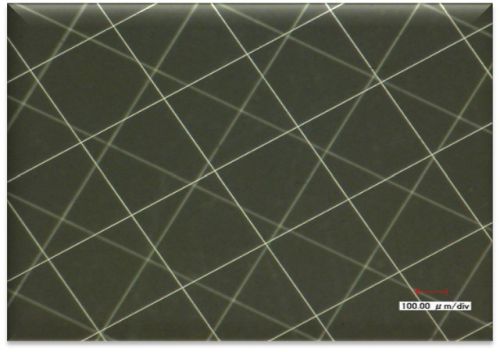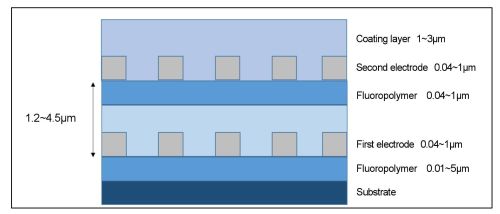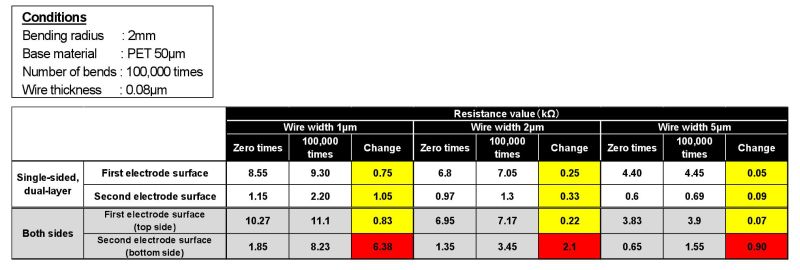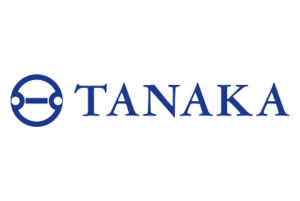Tanaka of Japan said in a release that it has a flexible touch panel technology using a single side dual layer structure based on metal mesh film. The company has started to develop the technology for commercial development and the company believes that it will contribute to higher image quality, thinner devices, increased flexibility, and improved durability of smart phone touch panels and other applications.
Touch panels normally have a structure made from two sensor substrates – an X sensor substrate and a Y sensor substrate. Tanaka Kikinzoku Kogyo discovered a technique for forming both the X sensor and Y sensor wiring on a single layer flexible substrate using metal mesh film.
 Enlarged exterior view of the metal mesh film with a single-sided, dual-layer wiring structure for use in touch sensors
Enlarged exterior view of the metal mesh film with a single-sided, dual-layer wiring structure for use in touch sensors
 Cross section view of the metal mesh film with a single-sided, dual-layer wiring structure for use in touch sensors
Cross section view of the metal mesh film with a single-sided, dual-layer wiring structure for use in touch sensors
Tanaka Kikinzoku Kogyo also discovered a transparent (conducting) electrode formed by etching ITO on a glass substrate and created a structure expected to improve bending strength (increased flexibility) that even metal mesh films cannot withstand as well as a method of manufacturing this structure.
- Features of the New Technology
- Single-sided, dual-layer structure contributes to slimness and improved bending strength (improved flexibility).
- By using a low temperature sintered silver nano-ink and an SuPR-NaP technique for pattern formation instead of etching, fine wires less than 4μm (2μm – 4μm) can be formed.
- Long films can be produced using a roll-to-roll process.
Tanaka Kikinzoku Kogyo’s metal mesh film printing technology can create fine wires thinner than 4μm. This is accomplished by applying low-temperature sintered silver nano-ink that can be formed into wires on PET film, which is not heat resistant, and fluoropolymer on a PET film or second substrate, causing adsorption and sintering of silver nano-ink on a fluoropolymer surface activated by irradiation with deep ultraviolet light, and using a SuPR-NaP (Surface Photo-Reactive Nanometal Printing) technique. In addition, Tanaka Kikinzoku Kogyo established a manufacturing process for the fine-wire film using a roll-to-roll processing method. This makes possible bulk printing of metal mesh films with mixed patterns ranging from several microns to tens of microns, sensor units, and frame parts. Tanaka Kikinzoku Kogyo is currently offering samples of metal mesh films with standard specifications (4μm, single-sided, single-layer structure) and is conducting research and development with the aim of providing sample shipments of single-sided, dual-layer structure metal mesh films in the future.

Results of Single-Sided, Dual-Layer Structure Metal Mesh Film Bending Tests
The resistance of the metal wires after the bending test tended to increase overall, but the degree of the increase in the resistance value of the metal wire on the two-sided structure second electrode surface (bottom side) was conspicuous. Also, even when the wire width on the test prototype was changed to 1 um, 2 um, or 5 um, the two-sided structure was weak when bent, and it was determined that the single-sided, dual-layer structure is resistant to bending deformation.
|
Copyright © 2018 ACN Newswire. All rights reserved. A division of Asia Corporate News Network. |

